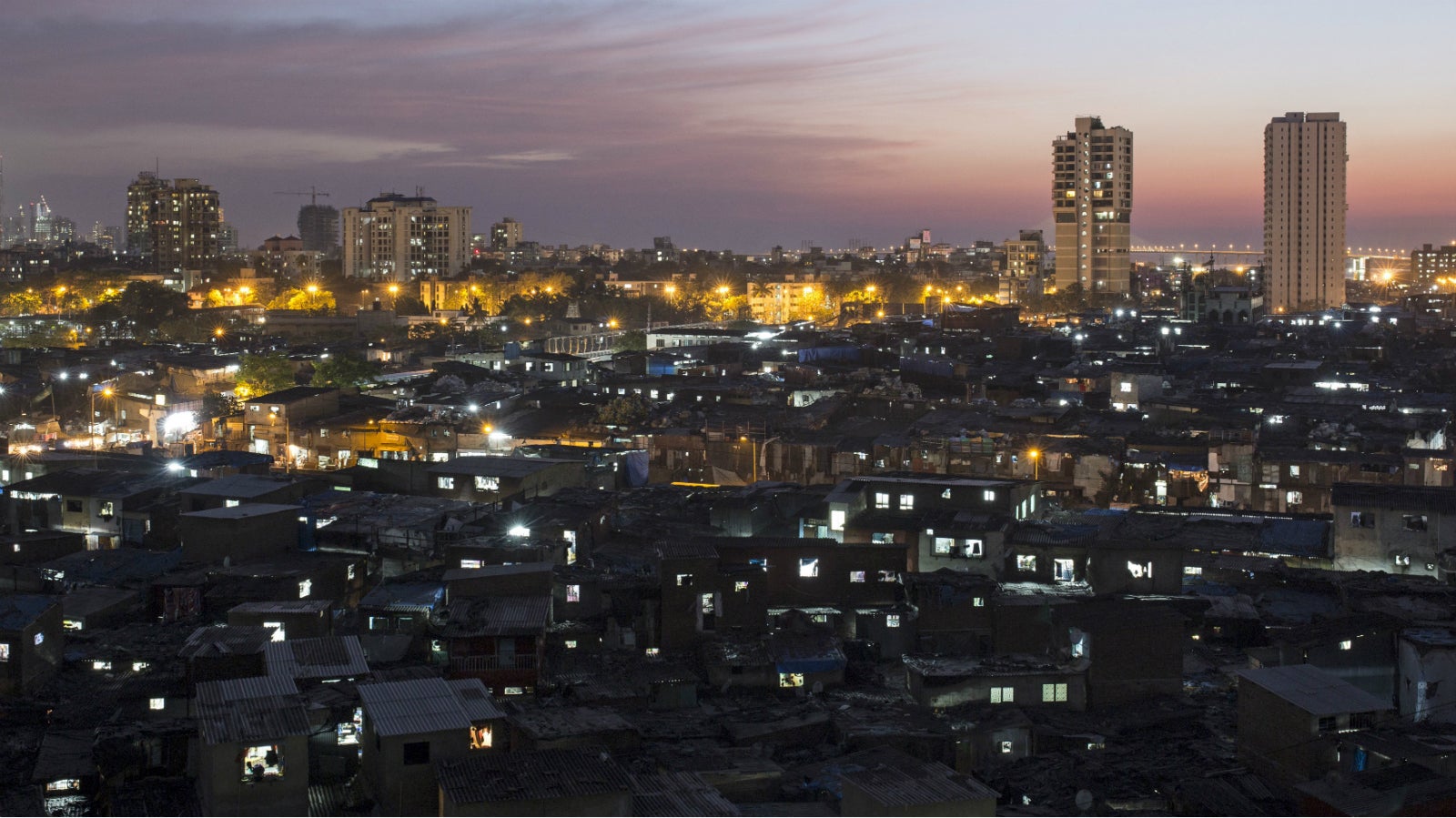The world’s biggest survey of slums is underway in India
For the past six months, authorities in India’s financial capital of Mumbai have been trying to figure out just how many people live in the city’s slums—reportedly the world’s biggest such exercise.


For the past six months, authorities in India’s financial capital of Mumbai have been trying to figure out just how many people live in the city’s slums—reportedly the world’s biggest such exercise.
The state government wants to determine the number of slum dwellers who will be eligible for new apartments when their current homes are brought down by private builders for redevelopment. The project was announced in December 2015.
An estimated 6.5 million people—around 55% of Mumbai’s total population—live in slums. There are some 3,293 such clusters spread across 36.45 square kilometres, a little more than the size of Macau.
Alarmed by their rising numbers and in order to free up land, the state government set up a Slum Rehabilitation Authority (SRA) in 1996 to construct new homes. SRA allows private builders to construct these new properties that consist of a small living room, a bedroom, a bathroom, and a kitchen. Its objective is to help those slum residents whose names appeared on electoral rolls as on Jan. 1, 1995, to find affordable homes.
State government rules allow any developer, who successfully manages to procure the consent of 70% of the slum residents to redevelop the property. The developer then has to re-house the residents, free of cost, in new buildings constructed on the land.
In the process, the developer can also use a portion of the land to build upscale towers for commercial sale. For instance, the Imperial Heights—India’s tallest twin residential buildings—in south Mumbai came up on land that was cleared of slums. The upcoming Ritz-Carlton Hotel in Worli has a similar story.
However, just a part of the survey has been completed since the exercise began in January. That’s due to the sheer difficulty of the task of surveying settlements in dingy, narrow, and often sewage-clogged alleys. Besides, there has also been stiff resistance from some residents, who don’t want to shift to the smaller SRA apartments. This has often made it difficult for authorities to even enter these slums.
Even then, the government has managed to identify 71,512 hutments and completed biometric survey of people living in over 45,000 shanties.
Space crunch
From its colonial days, Mumbai, which is surrounded by water on three sides, has waged a constant battle to find space to expand. In addition, the burgeoning employment opportunities in the city led to an influx of migrants from other states of India. Mumbai’s population has shot up by a massive 983% since 1911.
Shortage of affordable housing, coupled with rules on floor space index (FSI)—which haven’t changed since 1964—has led to a steady rise in real estate prices in Mumbai. FSI regulations determine the vertical length and size of a construction and vary with location and municipal wards. In Mumbai, the FSI is considerably lower than in many other cities.
Mumbai’s slums occupy 12% of its total geographical area and between 20% and 25% of the available construction area.
For realtors, therefore, slum rehabilitation provides an opportunity to access prime real estate. But it isn’t easy. For years, the government has been trying to get private companies to redevelop Dharavi, Asia’s largest slum, spread over 240 hectares. Despite the project being worth some Rs22,000 crore, the project still hasn’t got off the ground.